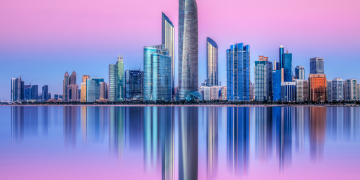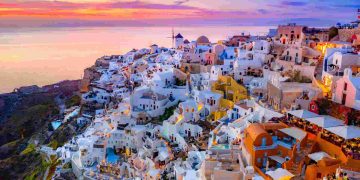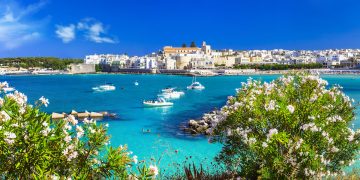Every country has its own rhythm—moments of pause, celebration, reflection. But in Thailand, that rhythm bursts into full color through its festivals. Here, traditions aren’t just remembered—they’re danced, splashed, floated, and paraded through the streets. For the culturally curious traveler, Thailand offers more than just golden temples and tropical beaches; it invites you into an immersive celebration of life that pulses through every lantern-lit night and water-soaked alley. To understand the heart of Thai culture, there’s no better way than stepping into its festival calendar.
Thailand’s Festival Culture and the Best Times to Visit
Thailand’s calendar is a vibrant mosaic of cultural, religious, and seasonal events, deeply tied to Buddhist customs, the lunar cycle, and ancient folklore. Unlike Western holidays that often last a day or two, Thai festivals are all-encompassing events that transform entire cities. These are not passive affairs for spectators but kinetic, shared experiences that locals and travelers alike dive into with unbridled enthusiasm.
Timing your visit around major festivals isn’t just smart planning—it’s a gateway into understanding Thailand’s soul. While festivals occur throughout the year, the two most iconic and immersive are Songkran and Loy Krathong, each offering a very different, but equally unforgettable, window into Thai tradition and joy.
Songkran Festival: Experience the World’s Largest Water Fight and Thai New Year Celebrations
If you thought the New Year meant quiet resolutions and midnight fireworks, think again. In Thailand, New Year—known as Songkran—means an epic, country-wide water fight that lasts for days. Celebrated each April, Songkran marks the beginning of the traditional Thai solar calendar and is rooted in the idea of washing away misfortunes and welcoming renewal.
At its spiritual core, Songkran begins with reverence: temples overflow with worshippers gently pouring water over Buddha statues and the hands of elders to show respect and receive blessings. But soon, the mood transforms. Streets become splash zones, and cities like Chiang Mai and Bangkok erupt in joy as locals, tourists, and children arm themselves with buckets, water guns, and even elephants wielding trunks full of water.
Chiang Mai is arguably the epicenter of Songkran’s exuberance. The ancient moat encircling the Old City becomes a water warzone, and parade floats bearing Buddha images slowly cruise the streets, doused with water as they pass. Bangkok’s Khao San Road and Silom districts are no less lively, with DJs, foam parties, and dance crews turning water play into a full-on festival.
Beyond the fun, Songkran has layers of meaning. Water symbolizes purification, renewal, and blessings for the year ahead. The festival also features traditional performances, almsgiving, and sand pagoda building at temples. Participating in Songkran is more than just fun—it’s a cultural rite of passage that offers insight into the Thai philosophy of joy, generosity, and karma.
Loy Krathong: The Beauty of Floating Lanterns and the Significance of This Thai Tradition
If Songkran is all about exuberance, Loy Krathong is the embodiment of serenity and reflection. Held in November during the full moon of the 12th lunar month, this festival is one of Thailand’s most magical spectacles. It’s when rivers shimmer with flickering lights, and the night sky mirrors the dreams and hopes of thousands.
“Loy” means “to float,” and “krathong” refers to the intricately crafted offerings—usually made from banana leaves, flowers, candles, and incense—floated on rivers and lakes. These offerings honor the water goddess Phra Mae Khongkha and symbolize letting go of past grievances, misfortunes, and regrets.

In Sukhothai, where the festival is believed to have originated, historical parks become the backdrop for candlelit ceremonies and traditional dance performances, lending the festival an almost timeless atmosphere. In Chiang Mai, Loy Krathong coincides with the Yi Peng lantern festival, where thousands of glowing lanterns are released into the sky, creating one of the most surreal sights in the world.
Bangkok’s Asiatique Riverfront and Lumphini Park also host massive celebrations with cultural shows, pageants, and krathong-making workshops. But even in small towns and villages, Loy Krathong carries a deeply personal resonance. You’ll see families gathering by the water’s edge, lighting candles together, and making quiet wishes before releasing their krathong.
For travelers, participating in Loy Krathong is a rare chance to engage in a communal moment of reflection and renewal. Crafting your own krathong and releasing it into the river while watching the flickering lights drift away is not only photogenic—it’s profoundly moving.
Top Destinations: Where to Celebrate These Festivals and Make Unforgettable Memories
To truly absorb Thailand’s festival spirit, your destination matters. While Bangkok, Chiang Mai, and Sukhothai are major cultural centers, each region offers a unique flavor of festivity.
Chiang Mai is Thailand’s cultural capital for good reason. During Songkran, its Old City becomes a joyful chaos of tradition and fun. During Loy Krathong, it transforms into a lantern-lit dreamscape. This northern city combines ancient Lanna heritage with youthful energy, making it ideal for festival immersion.
Bangkok, the bustling capital, brings modern flair to ancient customs. Here, Songkran celebrations are vast, colorful, and electrifying—especially around Silom Road, where even fire trucks join the water war. For Loy Krathong, Bangkok’s riverside hotels, parks, and temples offer elegant settings and easy access to floating your krathong.
For a more traditional take, Sukhothai offers authenticity over spectacle. The Loy Krathong celebrations here are deeply rooted in history, set against the backdrop of ancient ruins. It’s less crowded, more intimate, and perfect for travelers seeking cultural purity.
The beach towns of Phuket and Koh Samui also embrace these festivals, offering celebrations that blend Thai tradition with island party vibes. Imagine floating your krathong on the ocean as fireworks explode over the waves—a truly unforgettable moment.
Even lesser-known towns like Ayutthaya, Nan, or Udon Thani provide immersive experiences away from the crowds, often with local traditions and regional foods that add even more depth to your festival journey.
Conclusion
In Thailand, festivals are more than events—they are mirrors of the nation’s soul. From the water-drenched laughter of Songkran to the gentle glow of Loy Krathong’s lanterns, these moments offer more than spectacle. They offer connection: to people, to culture, and to something beautifully timeless.
To immerse yourself in Thailand’s unique festival culture is to let go of being a mere tourist and become part of the celebration. It’s sharing a bucket of water with a stranger and laughing like old friends. It’s lighting a candle and releasing your hopes into a river that’s carried centuries of prayers before yours.
So don’t just plan your trip to Thailand—plan to experience it, through its festivals. Because once you’ve danced in the water in Chiang Mai or watched a sky full of lanterns in Chiang Mai drift into the dark, Thailand will no longer be a place on a map. It will be a feeling you carry with you.





















